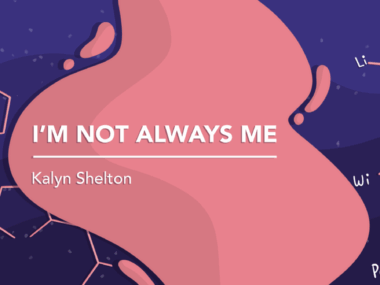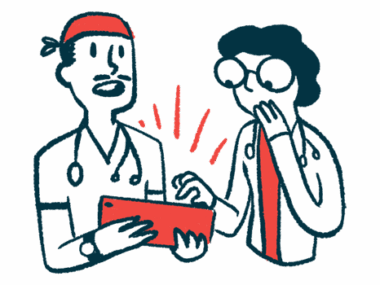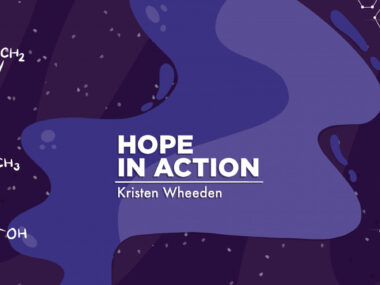A Meeting of the Minds to Advance Porphyria Research
Written by |

Last weekend, we welcomed the expert physicians and researchers of the Porphyrias Consortium to the United Porphyrias Association‘s home base in Bethesda, Maryland, with the goal of networking and brainstorming about how to move porphyria research and knowledge forward. The event marked the first in-person meeting of this phenomenal team since COVID-19 restrictions were put in place two years ago.
In the past, we typically had gathered for in-person networking and collaboration that often led to significant research being done. However, like so many others during the pandemic, we were relegated to meeting online via Zoom and Microsoft Teams.
There was a sense of giddiness when we were finally able to sit down face to face. I like to think I live a life full of hobbies and interests, but wow, this is when you know your work is your passion.
The agenda was loaded with intense collaboration on current and emerging research and improved diagnosis and therapies for the various types of porphyria. I couldn’t wait to engage, and the meeting did not disappoint.
But it wasn’t always this way.
When my youngest son, Brady, was diagnosed with erythropoietic protoporphyria (EPP) in 2009, I became a sponge for information about the disease, including reading publications by expert porphyria physicians like Karl Anderson, Herbert Bonkovsky, Robert Desnick, and others. They were legends to me, as they are for many others.
The work of these motivated researchers unlocked many of the mysteries of EPP. Their work also unleashed a new passion in me as I delved into the complexities of each of the eight distinct porphyrias. I was hooked. The porphyrias became both a personal and professional passion for my family and me.
I remember my first meeting with these doctors, and I was in sheer awe at joining them at a boardroom table. It was an odd feeling of both being out of my element and exactly where I was supposed to be.
My favorite situation is when the doctors discuss a complex issue or case. I can follow along for the first few sentences or so, but then they’ll take a deep dive into biochemistry and pathways, hypotheses and words, requiring a string of credentials to understand. The doctors to my left and right are always on notice as I whisper questions to them in a constant effort to keep up and learn more.
I feel a weighty responsibility to bring patient voices to the table with me. Patients are living with these diseases day in and day out, and it is my job to learn and understand the barriers and challenges that plague them. I do not have porphyria, but I do serve as a conduit between the patient community and the physicians — both experts in their own capacities.
Our efforts to tackle research questions, seek funding, improve diagnoses and disease management, and explore new therapeutics require a symbiotic relationship between the professionals and the patients. It is a balance that combines the curiosity of academics and the willingness of patients to participate.
We sometimes get stuck in an us-versus-them mentality that puts so much pressure on the doctors to be all-knowing, infallible beings. But they are human, too. The members of our scientific team are not afraid to say “I don’t know” when asked something about the porphyrias that doesn’t yet have an answer. As with other rare diseases, there are too many questions and too few researchers to look for answers.
I recently attended a virtual lecture by Dr. Bonkovsky titled “Why Doctors Waldenström and Watson Are Smiling.” Both were pioneers in defining the porphyrias, and Bonkovsky posited that they would be smiling due to recent advances in the diagnosis and management of acute hepatic porphyria.
“We hope to learn how important it is always to listen and to observe our patients closely,” Bonkovsky said. “The history is still so often the key to differential diagnosis and to the correct diagnosis.”
I hope that the pioneers in porphyria research and patient advocacy are smiling at what they have inspired. The physicians left Maryland last weekend with an agenda for the future — and that future is bright, my friends.
Note: Porphyria News is strictly a news and information website about the disease. It does not provide medical advice, diagnosis, or treatment. This content is not intended to be a substitute for professional medical advice, diagnosis, or treatment. Always seek the advice of your physician or other qualified health provider with any questions you may have regarding a medical condition. Never disregard professional medical advice or delay in seeking it because of something you have read on this website. The opinions expressed in this column are not those of Porphyria News or its parent company, Bionews, and are intended to spark discussion about issues pertaining to porphyria.







Rosemary Talab
Thank you for the article!
I have a comment about Porphyria and HRT. As a woman 55+, who used more transdermal bio-identical HRT as I aged, I found that it increased my reaction to the sun. It became a nightmare, since even 15 minutes exposure to water plants would make my face blossom into full-face lesions that would not go away. I thought I would be an invalid for life. So, I read more research and found that taking low-dose amounts of Doxycycline of 40 mgs. a day reduced them.
This knowledge helped me cope, I learned over time that if I combined 2 20 mg. Doxycycline tabs in the morning with 8-11 capsules of probiotics and 1 20 mg. Doxycyline tab in the evening with 6-8 capsules of probiotics, I could manage. I do not spend any time in the sun and, since photosensitivity is now considered a disability, I have a car tag that allows me to park close to stores to avoid as much sun as possible. Plane travel is very hard, since almost all terminals have huge windows, but I can now pre-board to get a window to shut. My car has a dark UVA/UVB windshield and my house has UVA/UVB window film now, so my lesions have decreased to the point that people comment about how nice my skin looks :)
I continue to read as much research as I can find. Porphyria safe and unsafe drug lists in the U.S. and other countries are not always applicable to me (causing some interesting reactions and near-death experiences), so it appears that diet, climate, population, etc. make medication reactions vary.
I read widely and am very grateful for these conferences and the many advancements that have been made in detection and treatment over the last twenty years that allow me to be able to cope and live a semi-normal life :)